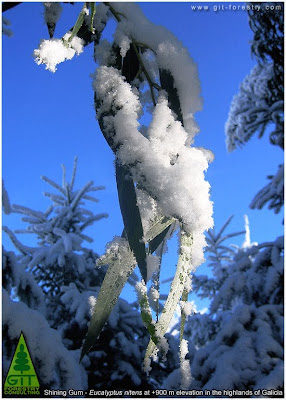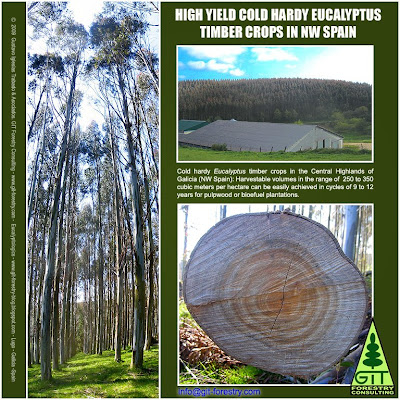Share
The 2010 Pulp & Paper Research "Event of the Year" ... happens in Lisbon
In a period of profound change and problems on a global scale, the industries in the forestry field, including the pulp and paper industry, are also facing great uncertainty and enormous challenges. This new and somehow unexpected reality requires different approaches from those prevailing until now, as well as changes in many distinct aspects, including those of a scientific and technological nature. In this scenario the XXI TECNICELPA Conference and Exhibition / VI Iberoamerican Congress on Pulp and Paper Research - CIADICYP 2010 will be devoted to the... New Paradigms in the Pulp and Paper Industry
Forestry :: Raw Materials :: Pulp Production :: Papermaking :: Converting :: Printing :: Pulp Chemistry :: Paper Chemistry :: Energy :: Environment :: Biotechnology :: Biorefinery
Deadline January 20th 2010
Pulp and Paper Industry Exhibition
The official languages of the conference are English, Portuguese and Spanish and the General Programme includes invited plenary lectures, oral presentations, poster sessions and a technical visit. In addition to a Welcome Reception and a Conference Banquet, an attractive Social Programme in one of the most beautiful capitals of Europe is also available to provide enjoyable moments for the accompanying persons.
It is certainly an event not to be missed, considering the relevance of the conference and the presence of leading scientists from Europe, North and South America as well as important companies in the sector. A visit to one of the largest and most modern mills in the world for printing and writing uncoated woodfree papers is included in the conference programme - the new paper mill of Portucel Soporcel Group, located in Setúbal.
On behalf of the Organizing Committee of the XXI TECNICELPA Conference and Exhibition / VI CIADICYP 2010 we have the honour to welcome all Scientists, Papermakers, Technicians, Manufacturers and Suppliers who work directly or indirectly in the Forestry, Pulp and Paper fields to participate in this event.
Yours sincerely
Cidália Torre Abreu
Paulo Ferreira
Click to Read Full Story...
Click to Display Summary only...
Share
Eucalyptus and Snow: More winter views of eucalypt timber plantations in Northwestern Spain
The intricate and varied topography of Galicia in Northwestern Spain means a full range of altitudinal and aspect driven climates can appear in a relatively limited geographic area. From sea level to the 1,987 metres of Pico Cuíña or the 2,127 metres of Peña Trevinca achievable in gradients of less than 150 kilometres, many tree things are possible.
Here, between 800 and 1200 meters elevation, where winters are harsh and population has decreased significantly in the last decades, a predominant subsistance oriented agricultural system with sparse tree cover has been gradually replaced for half a century by a combination of extensive cattle grazing and timber production. Among the first widely cultivated timber crop species in the area, an alternative to Maritime Pine (Pinus pinaster) and Monterey Pine (Pinus radiata) able to tolerate the constraining climate, is the staple timber of today: the Scots Pine (Pinus sylvestris).

Fig. 2: Pinus sylvestris (Scots Pine), the most common and classic tree crop in the Galician Highlands. (Click image to enlarge) A slow growing species compared to other commonly cultivated pines in Galicia, Pinus sylvestris reaches productivities in the range of 8 to 15 m3 per hectare and year and it is managed in long rotations, with harvest cycles each 50 to 70 years depending on site quality and target timber product.

Fig. 3: Pseudotsuga menziesii (Douglas Fir), a more recently popular faster growing tree species for timber production in the Highlands of Galicia, NW Spain.(Click the image to enlarge) A faster growing species than Pinus sylvestris, a less demanding species than any of the locally common hardwoods for much of the ranker soils of the Highlands, and a timber species with very good potential for solid softwood products have made of the Douglas Fir, Pseudotsuga menziesii, one of the most planted species for the Galician Highlands during the last twenty years. And as such, it is known locally as "Pino de Oregón", making the wintery views of some areas in Northwestern Spain quite similar looking to those of the true Oregon Country. But, what does all this wonderful conifer related chit chat have to do with Eucalyptus? Everybody knows eucalypts cannot grow "in Oregon"? ... Bullshit!

That is the main reason we are showing you today the non Eucalyptus not growing under the non snow in the Highlands of Galicia. Of course, they do not grow fast enough here to be considered a reasonable alternative for forestry production. They only outgrow every other commercial tree species cultivated in the area, hardwood or softwood.


Fig. 6: Seven year old windbreak at +900 metres elevation in the Highlands of Galicia. Foreground, Douglas Fir (Pseudotsuga menziesii), 3 metres high. Background, Shining Gum (Eucalyptus nitens), up to 12 metres high. (Click the image to enlarge) Not really that surprising, considering there are examples of a not too different mountain habitat in the harsher extremes of its native forests back in Australia, be it approaching the 1,300 metre elevation in Victoria, or be it within the 1,600 metre elevation range it reaches in the Barrington Tops of New South Wales. 
Yet another example of the versatility of the very diverse genus Eucalyptus, able to become the source of plants of economic importance adaptable to almost any climate and soil on the planet. Countless examples are scattered around the world, from the sandy arid climates to the lush subtropical and tropical ones, from sea level to the treeline, from the permanent warmth of the equator, to the snowy mountains of the world. Also in Eucalyptologics...







Want to contact us?

Contact GIT Forestry Consulting - Eucalyptologics

GIT's Eucalyptology Topics
© 2007-2010 Gustavo Iglesias Trabado. Please contact us if you want to use all or part of this text and photography elsewhere. We like to share, but we do not like rudeness.
Click to Read Full Story...
Click to Display Summary only...
















































